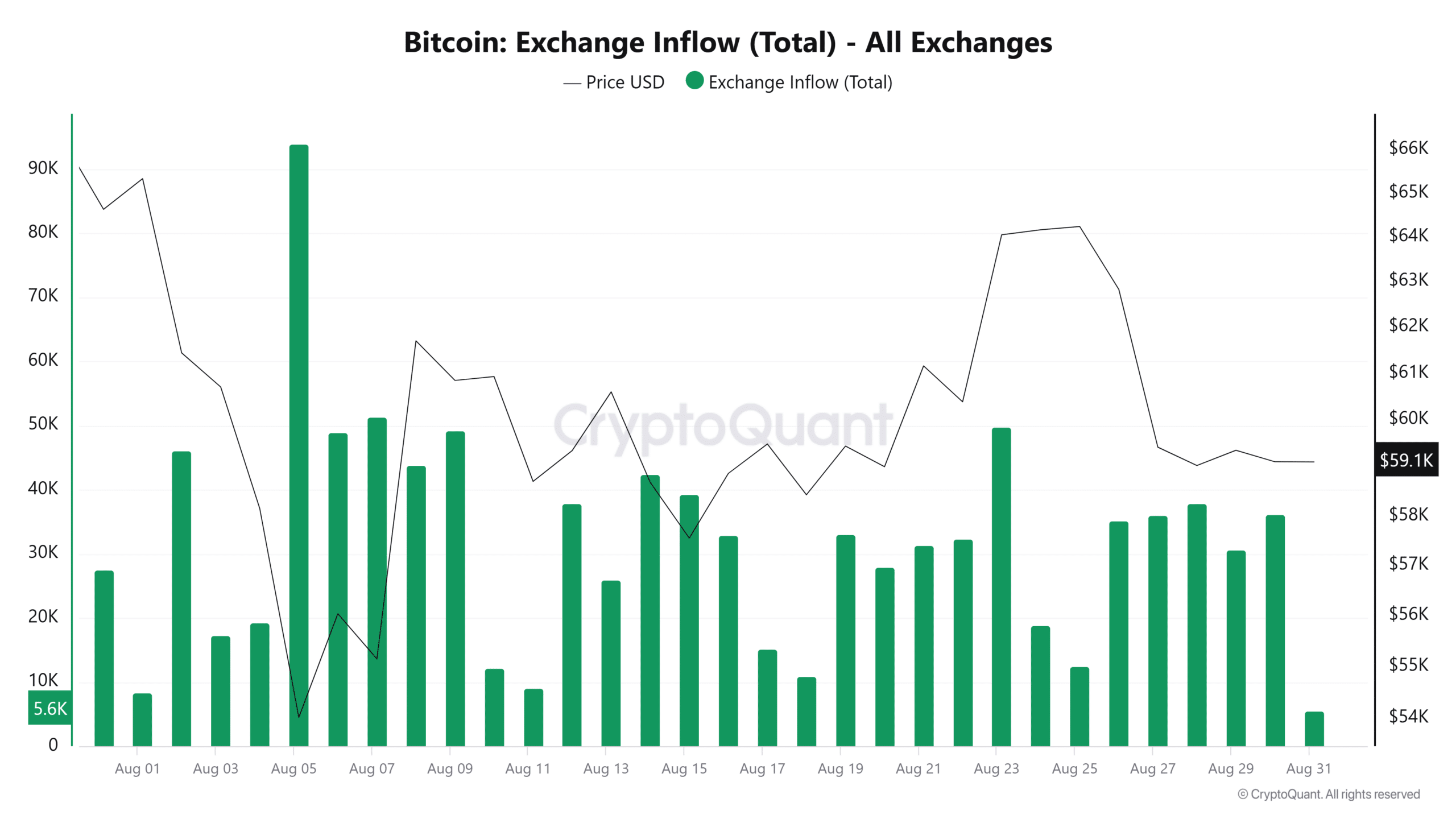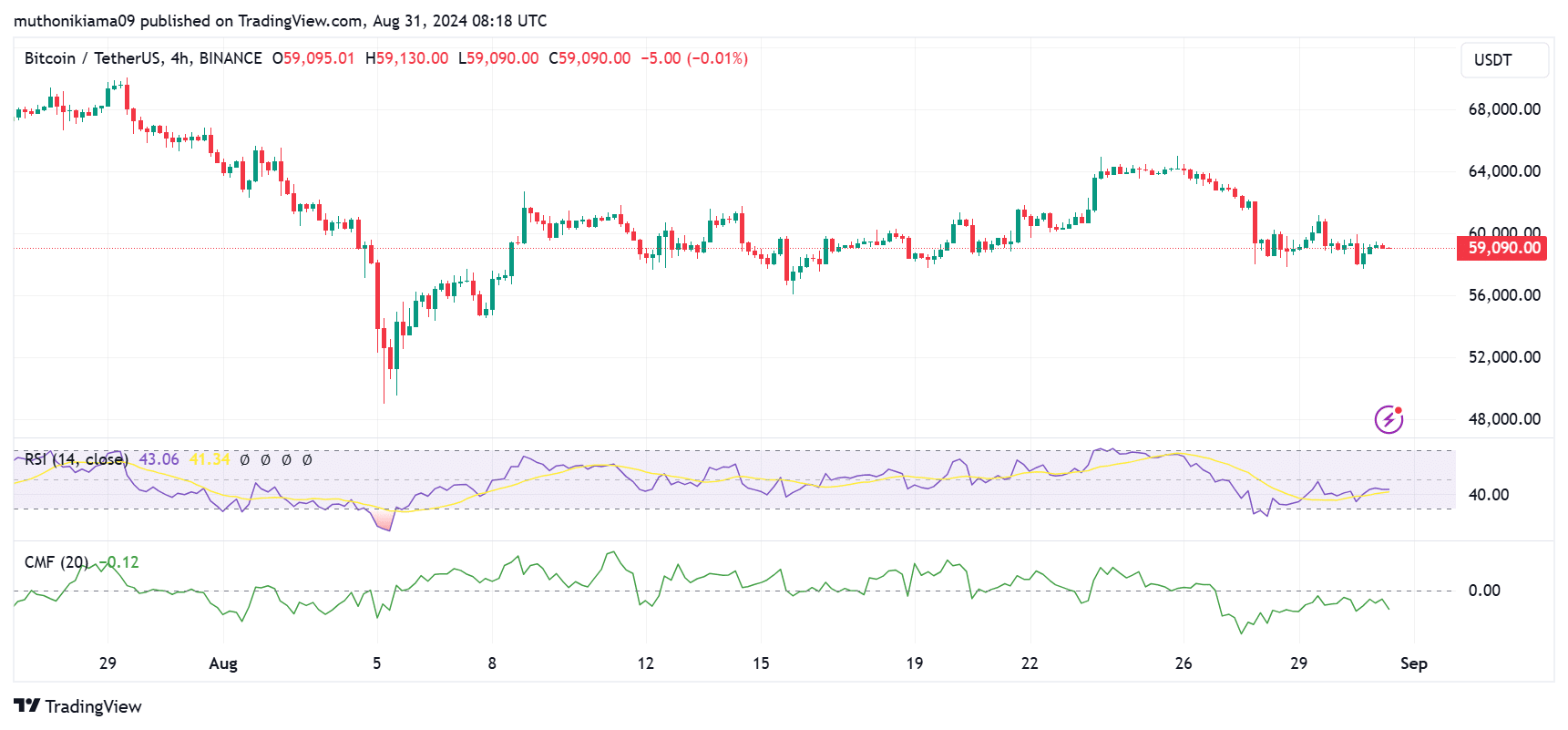- Bitcoin shows signs of weakening demand heading into September, a month often associated with price declines
- Potential US interest rate cuts and other bullish catalysts could fuel volatility
August was a volatile month for Bitcoin (BTC) Price. BTC began trading around $63,000 on August 1st and just a week into the month, the cryptocurrency’s price dropped to around $49,000. While the price then rebounded to reach $65,000 by the end of August, it has since dropped to trade at $59,190 at press time.
Despite Bitcoin’s price dropping nearly 8% over the past month, traders are anticipating further declines in September if the currency follows past price trends. In fact, according to popular analyst Ali Martinez,
“If you think August was a rough month for Bitcoin, keep in mind that September often brings negative returns as well..”
For example, in September 2023, the price of the cryptocurrency fluctuated between $24,000 and $27,000, without registering any significant gains. A sharp 17% drop in price was also observed in September 2021.
So will history repeat itself or will Bitcoin break this pattern?
An overview of key indicators
Several key indicators already show that bears are gaining the upper hand and positioning themselves for a potential decline in September.
For example, data from CryptoQuant revealed a significant increase in inflows to exchanges since late August. These inflows came shortly after the price of BTC rebounded above $64,000.


(Source: CryptoQuant)
This indicator could mean that after the recent price rebound, a significant number of traders have chosen to sell and minimize risk in case of further declines in the future.
Buyers are also showing hesitation to return to the market. Several key indicators, the Relative Strength Index (RSI) and Chaikin Money Flow (CMF), showed a decline in buying interest at press time.
The RSI at 43 suggests that sellers are still in control and buyers are unwilling to enter the market at current prices. The CMF has also been hovering in the negative zone since August 26, indicating bearish dominance.


(Source: Tradingview)
On August 30, the United States announced that the core PCE index for July came in at 2.6% year-on-year, lower than the 2.70% expected.
Such positive macroeconomic factors usually lead to a rise in the price of Bitcoin. However, this did not happen yesterday.
According to QCPWith recent macroeconomic news having virtually no effect on cryptocurrency prices, BTC will continue to trade in a range between $58,000 and $65,000 in the near term.
Additionally, inflows to spot Bitcoin exchange-traded funds (ETFs) have weakened. Over the past four consecutive days, for example, BTC has seen steady outflows, according to SoSoValue data.
Will September 2024 be different?
The weakening demand for Bitcoin seems to indicate that traders are hesitant to enter the market in case September turns out to be another dismal month.
However, several bullish factors could support a recovery in September. Positive data on the US economy has fueled speculation that the US will cut interest rates at the next meeting of the Federal Open Market Committee (FOMC).
Data from the CME FedWatch Tool showed that a majority of investors expect the Fed to back away from tightening its monetary policy for the first time since March 2020. If that happens, it will fuel a rise in risk assets such as Bitcoin.
Another bullish catalyst is the release of former Binance CEO Changpeng Zhao from prison. His release date is set for September 29, and some have already anticipate This could trigger a bull run.
Finally, former US President Donald Trump will debate US Vice President Kamala Harris in September. If cryptocurrency is mentioned, this could increase volatility.
Bitcoin funding rates have also turned positive and have increased significantly over the past few days. This implies an increase in long positions – a bullish signal as traders anticipate future gains.

(Source: Coinglass)

